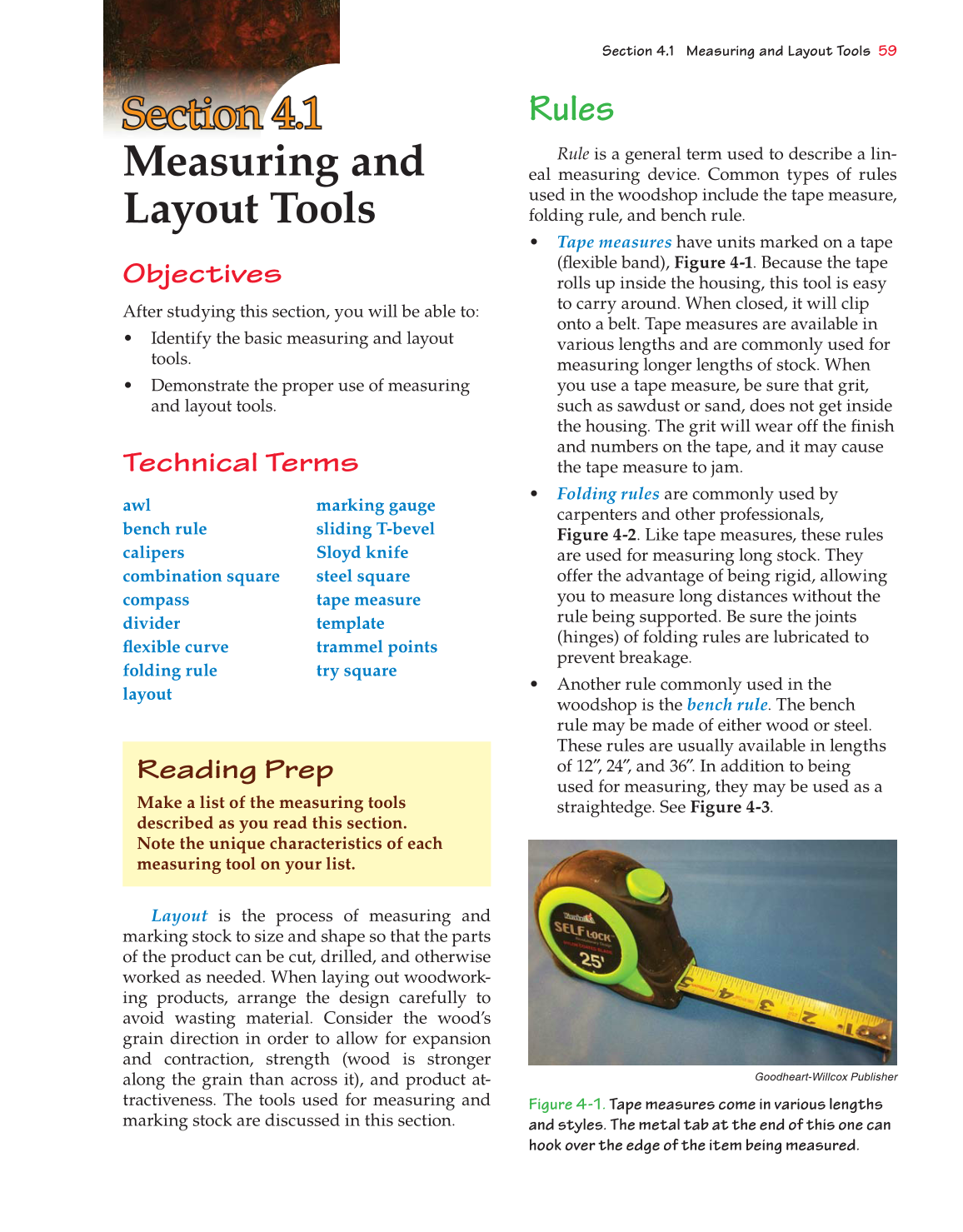Section 4.1 Measuring and Layout Tools 59
Section 4.1 Section 4.1
Measuring and
Layout Tools
Objectives
After studying this section, you will be able to:
• Identify the basic measuring and layout
tools.
• Demonstrate the proper use of measuring
and layout tools.
Technical Terms
awl
bench rule
calipers
combination square
compass
divider
fl exible curve
folding rule
layout
marking gauge
sliding T-bevel
Sloyd knife
steel square
tape measure
template
trammel points
try square
Reading Prep
Make a list of the measuring tools
described as you read this section.
Note the unique characteristics of each
measuring tool on your list.
Layout is the process of measuring and
marking stock to size and shape so that the parts
of the product can be cut, drilled, and otherwise
worked as needed. When laying out woodwork-
ing products, arrange the design carefully to
avoid wasting material. Consider the wood’s
grain direction in order to allow for expansion
and contraction, strength (wood is stronger
along the grain than across it), and product at-
tractiveness. The tools used for measuring and
marking stock are discussed in this section.
Rules
Rule is a general term used to describe a lin-
eal measuring device. Common types of rules
used in the woodshop include the tape measure,
folding rule, and bench rule.
• Tape measures have units marked on a tape
(fl exible band), Figure 4-1. Because the tape
rolls up inside the housing, this tool is easy
to carry around. When closed, it will clip
onto a belt. Tape measures are available in
various lengths and are commonly used for
measuring longer lengths of stock. When
you use a tape measure, be sure that grit,
such as sawdust or sand, does not get inside
the housing. The grit will wear off the fi nish
and numbers on the tape, and it may cause
the tape measure to jam.
• Folding rules are commonly used by
carpenters and other professionals,
Figure 4-2. Like tape measures, these rules
are used for measuring long stock. They
offer the advantage of being rigid, allowing
you to measure long distances without the
rule being supported. Be sure the joints
(hinges) of folding rules are lubricated to
prevent breakage.
• Another rule commonly used in the
woodshop is the bench rule. The bench
rule may be made of either wood or steel.
These rules are usually available in lengths
of 12″, 24″, and 36″. In addition to being
used for measuring, they may be used as a
straightedge. See Figure 4-3.
Figure 4-1. Tape measures come in various lengths
and styles. The metal tab at the end of this one can
hook over the edge of the item being measured.
Goodheart-Willcox Publisher
